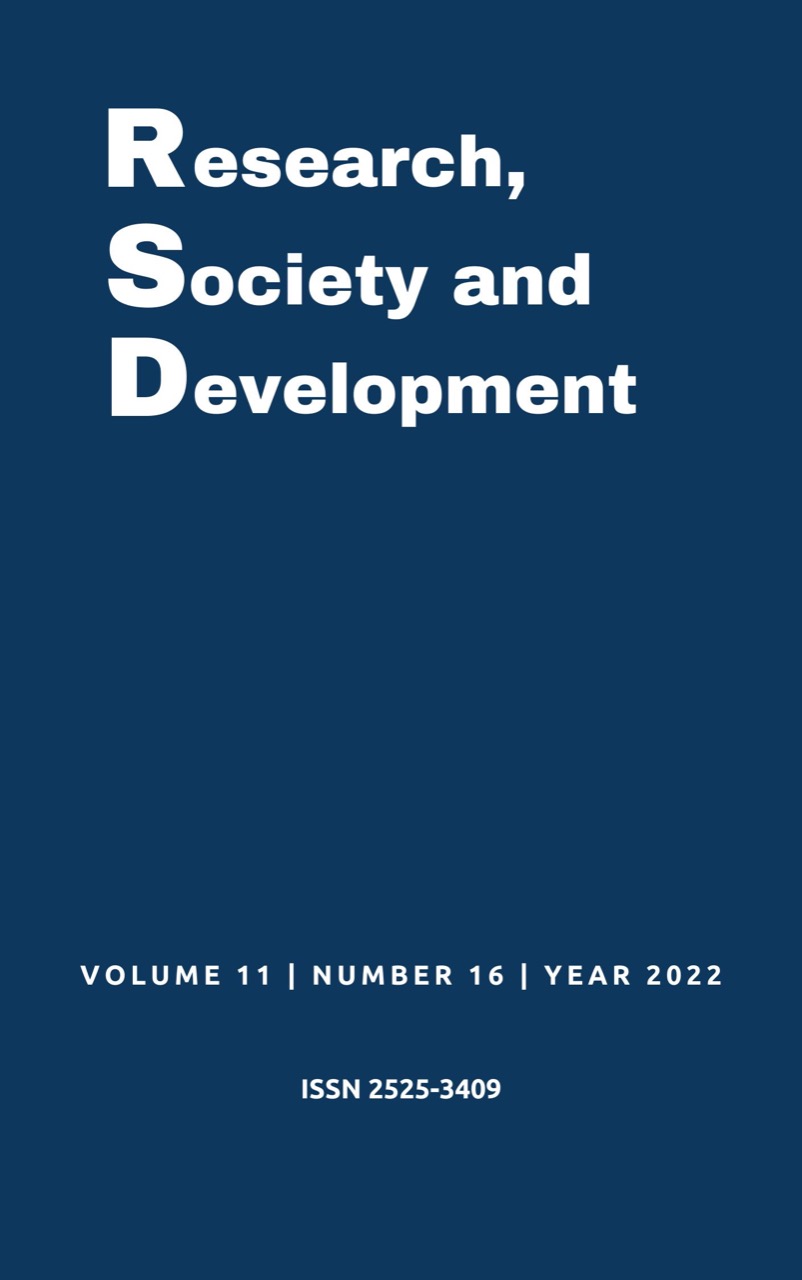Phytotherapy as an adjunct in the treatment of binge eating disorder
DOI:
https://doi.org/10.33448/rsd-v11i16.38331Keywords:
Phytotherapy, Griffonia, Binge eating disorder.Abstract
With the increase in the prevalence of Common Mental Disorders, society started to adhere to the use of non-drug treatments, opting for the use of folk medicine, mainly because its principle is non-pharmacological and in a way is more harmful to the body, and for the Food Compulsion the most found use is Griffonia Simplicifolia is a plant that contains 5-HTP which is a precursor of serotonin (5-HT) and melatonin (MLT), is found in West Africa, its use is related to improvement mood, sleep regulation and weight loss. Given the context presented, this article aims to present the relationship of herbal medicine treatment as an adjunct in binge eating disorder. This is an integrative literature review, carried out between January and March of the year 2022, based on the PICo strategy, where P- represents an acronym for Patient or Problem (Eating Compulsion), I- Intervention (use of herbal medicines in the treatment of binge eating disorder), Co-Context (treatment with herbal medicines). A search was carried out in the Virtual Health Library (VHL), using the Descriptors in Health Sciences (DeCS): “Phytotherapy”, “Griffonia” and “Compulsive Eating Disorder”, thus, 25 articles were used to compose this review. The use of phytotherapy is, therefore, an important ally for the treatment of various disorders. The use of folk medicine is of great help when used correctly and prescribed by a qualified professional.
References
Abeso. (2016). Diretrizes brasileiras de obesidade 2016. 4.ed. ABESO - Associação Brasileira para o Estudo da Obesidade e da Síndrome Metabólica.
Brasil. (2021). Formulário de fitoterápicos da farmacopeia brasileira 2ed. ANVISA.
Bloc, L. G., de Paula Nazareth, A. C., da Silva Melo, A. K., & Moreira, V. (2019). Transtorno de compulsão alimentar: revisão sistemática da literatura. Revista Psicologia e Saúde, 11(1), 3-17.
Borges, F. V., & Sales, M. D. C. (2018). Políticas públicas de plantas medicinais e fitoterápicos no Brasil: sua história no sistema de saúde. Pensar Acadêmico, 16(1), 13-27.
Carnevale, G., Di Viesti, V., Zavatti, M., & Zanoli, P. (2011). Anxiolytic-like effect of Griffonia simplicifolia Baill. seed extract in rats. Phytomedicine, 18(10), 848-851.
Rolim, W. J. R. Desenvolvimento de um sistema de monitoramento dos fatores temperatura, umidade, amônia e luminosidade da sala de criação do biotério do IPEN (Doctoral dissertation, Universidade de São Paulo).
Cunningham, A. B., Brinckmann, J. A., & Harter, D. E. V. (2021). From forest to pharmacy: Should we be depressed about a sustainable Griffonia simplicifolia (Fabaceae) seed supply chain? Journal of Ethnopharmacology, 278, 114202.
Dos Santos, G. M. (2018). A fitoterapia na formação do profissional nutricionista. Monografia de Especialiação. Universidade Candido Mendes.
Esteves, C. O., Rodrigues, R. M., Martins, A. L. D., de Almeida Vieira, R., Barbosa, J. L., & Vilela, J. B. F. (2020). Medicamentos fitoterápicos: prevalência, vantagens e desvantagens de uso na prática clínica e perfil e avaliação dos usuários. Revista de Medicina, 99(5), 463-472.
Ferreira, T. S., Moreira, C. Z., Cária, N. Z., Victoriano, G., Silva Jr, W. F., & Magalhães, J. C. (2014). Phytotherapy: an introduction to its history, use and application. Revista Brasileira de Plantas Medicinais, 16, 290-298.
Fernández‐Aranda, F., Casas, M., Claes, L., Bryan, D. C., Favaro, A., Granero, R., ... & Treasure, J. (2020). COVID‐19 and implications for eating disorders. European Eating Disorders Review, 28(3), 239.
Ferreira, P. M., de Souza, T. C., Freitas, P. S., Bressan, V. R., de Almeida Silva, L. J., & de Souza Terra, F. (2021). Uso das práticas integrativas e complementares pela enfermagem em pessoas com câncer: revisão integrativa. Brazilian Journal of Health Review, 4(1), 1841-1858.
Kavuri, S., & Mukkamala, S. (2010). Estimation of L-5-Hydroxytryptophan in West African medicinal plant Griffonia simplicifolia Baill. by ultra performance liquid chromatography. International Journal of Biological and Chemical Sciences, 4(2).
Klobukoski, C., & Höfelmann, D. A. (2017). Compulsão alimentar em indivíduos com excesso de peso na Atenção Primária à Saúde: prevalência e fatores associados. Cadernos Saúde Coletiva, 25, 443-452.
Lemaire, P. A.; & Adosraki, R. K. An HPLC method for the direct assay of the serotonin precursor, 5hydroxytrophan, in seeds of Griffonia simplicifolia. Phytochemical Analysis. Vol. 13. Núm. 6. p. 333-337. 2002.
Resolução CFN N° 556, de 11 de abril de 2015
Talbott, S. M., & Hughes, K. (2008). Suplementos dietéticos: guia prático para profissionais de saúde. Guanabara Koogan.
Organização Mundial da Saúde (OMS). Promoção e desenvolvimento da medicina tradicional.
Genebra: Organização Mundial de Saúde, 1978.
Zarychta, K., Chan, C. K., Kruk, M., & Luszczynska, A. (2020). Body satisfaction and body weight in under-and healthy-weight adolescents: mediating effects of restrictive dieting, healthy and unhealthy food intake. Eating and Weight Disorders-Studies on Anorexia, Bulimia and Obesity, 25(1), 41-50.
Downloads
Published
Issue
Section
License
Copyright (c) 2022 Kewbylly Dayanny Inacio da Costa; Bruna Saraiva Carvalho; Letícia Gabriela Henrique Santana; Tayane Moura Martins; Rita de Cássia Rodrigues; Luciana Spindola Monteiro Toussaint; Érida Zoé Lustosa Furtado; Antonia Dyeylly Ramos Torres Rios; George Ventura Alves Neri; Rodrigo Daniel Zanoni

This work is licensed under a Creative Commons Attribution 4.0 International License.
Authors who publish with this journal agree to the following terms:
1) Authors retain copyright and grant the journal right of first publication with the work simultaneously licensed under a Creative Commons Attribution License that allows others to share the work with an acknowledgement of the work's authorship and initial publication in this journal.
2) Authors are able to enter into separate, additional contractual arrangements for the non-exclusive distribution of the journal's published version of the work (e.g., post it to an institutional repository or publish it in a book), with an acknowledgement of its initial publication in this journal.
3) Authors are permitted and encouraged to post their work online (e.g., in institutional repositories or on their website) prior to and during the submission process, as it can lead to productive exchanges, as well as earlier and greater citation of published work.


